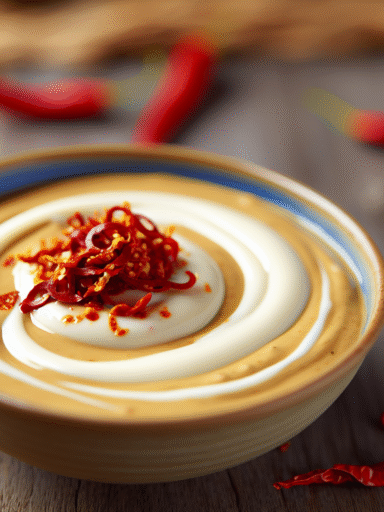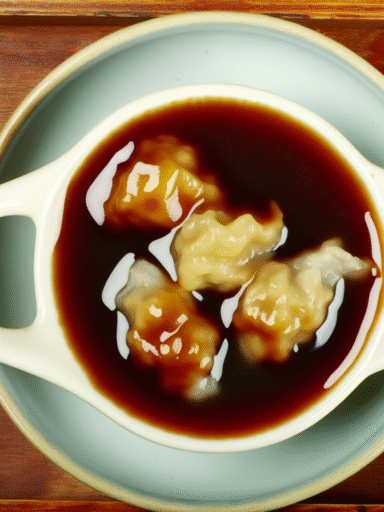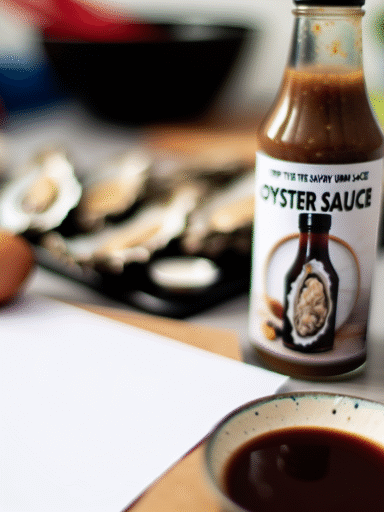Soy Sauce
Discover the rich, umami-packed world of soy sauce—a staple in kitchens worldwide that brings depth to everything from marinades to dipping sauces. Whether you’re making your own or learning to use it like a pro, this savory condiment adds a magical boost to your favorite dishes.
Tags / Categories
- Flavor Profile: Umami, salty, slightly sweet
- Main Ingredients: Soybeans, wheat, salt, water
- Region: East Asia (China, Japan, Korea)
- Usage: Marinades, stir-fries, dipping sauce, seasoning
Quick Info Box
- Prep Time: 10 minutes
- Cook Time: 30 minutes (plus fermentation time if homemade)
- Total Time: Varies (from 40 minutes to several months fermentation)
- Difficulty Level: Intermediate (for homemade versions)
- Yield: About 2 cups (homemade batch)
Ingredients List
- 1 cup dried soybeans
- 1 cup wheat berries (or all-purpose flour as a substitute)
- 1/2 cup salt
- 4 cups water
- Optional: 1 tablespoon koji starter (for fermentation)
Crafting Your Own Soy Sauce at Home
Making soy sauce might sound like a long, complicated process—and I don’t blame you! Traditional soy sauce undergoes months of fermentation, which lends to its deep, complex flavor. But don’t let that scare you off. Let’s break down what goes into this magical liquid gold.
First off, the basics: soy sauce starts with soybeans and wheat. These ingredients are cooked, mixed with salt and water, then fermented with the help of special fungi known as koji. The fermentation helps develop that signature umami punch we’re all addicted to. If you want to try a quicker method, simmering the cooked beans and wheat with water and salt yields a fast, lighter version—though it won’t have that same depth.
Step-by-step Homemade Soy Sauce
- Soak the Soybeans: Place dried soybeans in a bowl and cover with plenty of water. Leave them to soak overnight. They’ll plump up and soften nicely.
- Cook the Beans: Transfer the soaked beans to a pot, cover with fresh water, and boil for about 2 hours until tender. Don’t stress if some beans look slightly mushy—that’s perfect!
- Prepare the Wheat: While beans cook, roast your wheat berries lightly in a dry pan until golden. Once cool, grind them coarsely or crush with a rolling pin.
- Mix & Inoculate: Combine the cooked soybeans and roasted wheat. If you have a koji starter, sprinkle it in to encourage authentic fermentation.
- Ferment: Transfer this mix to a clean, sterilized container, cover loosely, and leave it in a cool dark spot for several months. You can peek weekly and stir gently, noting that your kitchen will smell amazing right about now.
- Add Salt Brine: After initial fermentation, dissolve salt in water creating a brine, pour it over the fermenting mash. This slows wild bacteria while enhancing flavor over time.
- Strain & Store: Once fermentation reaches your desired flavor (usually 6 to 12 months), strain through cheesecloth, bottle, and refrigerate. Voilà—your homemade soy sauce!
Serving Suggestions & Culinary Uses
Soy sauce is Swiss Army knife of the condiment world—salty, savory, and a flavor booster for just about anything.
- Marinades: Combine with garlic, ginger, and sesame oil for an instant stir-fry marinade.
- Dipping Sauce: Mix soy sauce with a splash of rice vinegar and chili for sushi or dumplings.
- Seasoning: Splash some over steamed rice, ramen, or sautéed vegetables for a quick umami hit.
- Glaze: Simmer with honey and garlic for a sticky glaze on grilled meats or tofu.
Origin & History
Soy sauce has been a culinary cornerstone in East Asia for over 2,000 years. Originating in China during the Zhou dynasty, it was originally used as a way to stretch salt and enhance flavors. It spread to Japan and Korea, each culture adding subtle twists—like the lighter, sweeter Japanese shoyu or Korea’s ganjang. Fun trivia: the word “soy” doesn’t come from Japanese but is a Western adaptation of the Japanese word “shoyu.”
Variations & Substitutions
- Low Sodium Soy Sauce: Great for those watching their salt intake without sacrificing umami.
- Tamari: A wheat-free, often gluten-free soy sauce variant favored by those with gluten sensitivities.
- Coconut Aminos: A soy-free substitute made from fermented coconut sap, a bit sweeter and less salty.
- Dark vs Light Soy Sauce: Dark soy sauce is richer, sweeter, and thicker ideal for braises, while light soy sauce is saltier and used mainly for seasoning and dipping.
Storage & Make-Ahead Tips
Soy sauce doesn’t have a super short shelf life thanks to its high salt content. Keep it in a cool, dark pantry for several months unopened. Once opened, refrigeration helps preserve maximum flavor, especially for homemade varieties. If you’ve made a larger batch, freezing in smaller containers is possible—but note that texture and flavor might subtly shift.
Nutritional Information (per 1 tablespoon)
- Calories: ~10
- Protein: 1 g
- Fat: 0 g
- Carbohydrates: 1 g
- Sodium: 900–1000 mg (varies by brand)
Related Sauces / Try Next
- Teriyaki Sauce — Sweet and savory glaze with soy sauce base.
- Ponzu Sauce — A citrusy, tangy soy sauce variation.
- Hoisin Sauce — Thick, sweet, and spicy, perfect for dipping or glazing.
FAQ
Q: Can I make soy sauce without fermenting it for months?
A: You can create quick soy sauce substitutes by simmering soybeans and wheat with salt, but it lacks the rich depth and umami complexity that fermentation creates.
Q: Is soy sauce gluten-free?
A: Traditional soy sauce usually contains wheat, but tamari is a great gluten-free alternative made mostly without wheat.
Q: How salty is soy sauce compared to table salt?
A: Soy sauce is about half as salty as pure salt by volume, but because it adds umami and complexity, you often need less to season your dishes.
In conclusion, soy sauce is a versatile, ancient condiment that enriches countless dishes with its bold umami charm. Whether you’re adventurous enough to brew your own batch, or simply want to maximize your next stir-fry’s flavor, understanding soy sauce’s origins, variations, and uses can turn ordinary meals into memorable feasts. So go ahead—pour a little liquid gold into your cooking and savor the magic!



